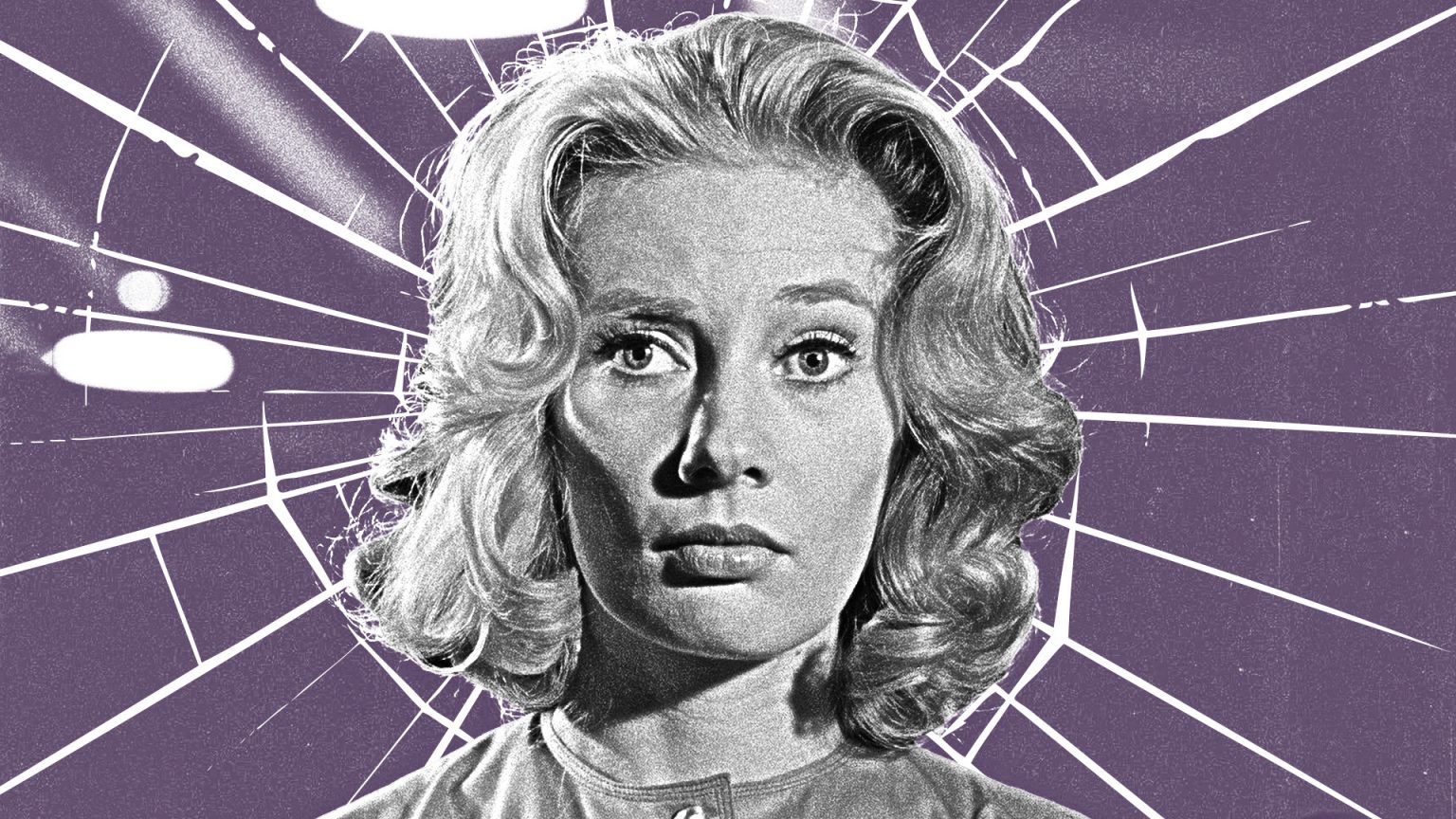Despite making a little impact during its initial run on the drive-in circuit, Carnival of Souls has gained a cult following over time and still inspires unease many years later. Made on the cheap by Herk Harvey, a director of educational videos who would never make another feature, the film is charmingly maladroit, with choppy editing and stilted acting. But these factors only lend authenticity to its story of a woman stalked by visions of death. Mary (Candace Hilligoss) navigates a world that is like a slightly-off replica of our own, suspending the audience on the edge of a nightmare. In a place where men make all the rules, Mary is simultaneously an object and invisible, a walking ghost and a target of male violence. The film operates as a chilling allegory for life as a woman in a patriarchal society.
The film opens abruptly, as a man in a car challenges the women in the neighboring vehicle to a drag race across a narrow bridge. The women are pushed off the road, plunging into the water below. As a crew works to retrieve their bodies, Mary emerges from the muddy water. Shot from above, she is like an aquatic being that has just grown limbs and learned to walk—she is re-entering a world that has no place for her. Right away the film establishes what happens to women who dare to take up too much space in this world.
Though Mary’s body is miraculously intact, she has left something invisible behind. Throughout the film, she is pursued by visions of a ghostly figure with a white-painted face (described in the credits merely as “the man” and played by the director himself), who leers at her from windows and follows her into stores and buildings. His look is inescapable and ubiquitous, floating in darkened windows, lurking beneath the faces of the men who surround Mary—the male gaze personified as a ghastly specter.
In her seminal essay “Visual Pleasure and Narrative Cinema,” theorist Laura Mulvey coined the term “male gaze” as a way to describe how mainstream film tends to cater to a male perspective, limiting women on-screen to passive roles—objects rather than full subjects with the agency. Released in 1962, Carnival of Souls predates Mulvey’s essay by about ten years, but much of its horror derives from the pernicious nature of the male gaze, which not only turns women into sexual objects for male enjoyment but also denies them full humanity. This gaze serves as Mary’s undoing.
The man’s malevolent stare unnerves through its sheer intensity and operates as a stand-in for all of the men Mary encounters. His gaze is the combined force of their gazes, each different but damaging in its own way. Her lecherous neighbor sees her as a conquest, which Harvey emphasizes using a deep close upon his ogling eye. Then there is the beatific but myopic gaze of the priest who employs Mary as an organist in his church. He sees her as his ideal of a pure, devout woman, rather than the person in front of him, who wants to make some money and go home. There is also the doctor who dismisses her fear as “hysteria.” These gazes slowly erode her sense of self.
Mary begins to experience episodes where she is suddenly invisible to those around her, unable to hear them or make herself be heard. As she tells her doctor, it is as though she momentarily “ceased to exist.” In such moments, the film appears to fall apart at the seams. The soundtrack lags half a beat behind the image, the clacking sound of Mary’s heels on the sidewalk is too slow and heavy. “You can hear me,” she says, then looks directly into the camera. Then her eyes widen in fear as though she feels the gaze of the audience, the leer of the white-faced man.
Visions of a nearby abandoned fairground come to Mary in flashes, threatening to pull her further toward the world of the dead. She sees ghoulish figures twirling in the abandoned carnival. One second she is watching them from a distance, in another, she is whirling with the white-faced man as her dancing partner. She sees herself frozen in his arms and screams, terrified and lost somewhere between spectator and subject. It’s a reminder for the audience that the images we see on-screen aren’t benign, they’re intertwined with our waking lives. The representations of people we see on-screen feed into our understanding of the world and our place within it, and many of these representations are toxic.
Carnival of Souls is more than just a haunting portrayal of the horror of mortality. In the end, Mary doesn’t just succumb to death—it’s almost as though her very identity disintegrates as she continues to encounter men who see through her. Meanwhile, their gazes feed into the malignant stare of the white-faced man. It’s interesting, too, that this figure is played by Harvey. As the director, his gaze becomes our own. And perhaps the film’s most lasting horror is the way the audience becomes complicit in the unmaking of the heroine.
Watch Now: Herk Harvey’s Carnival of Souls.




